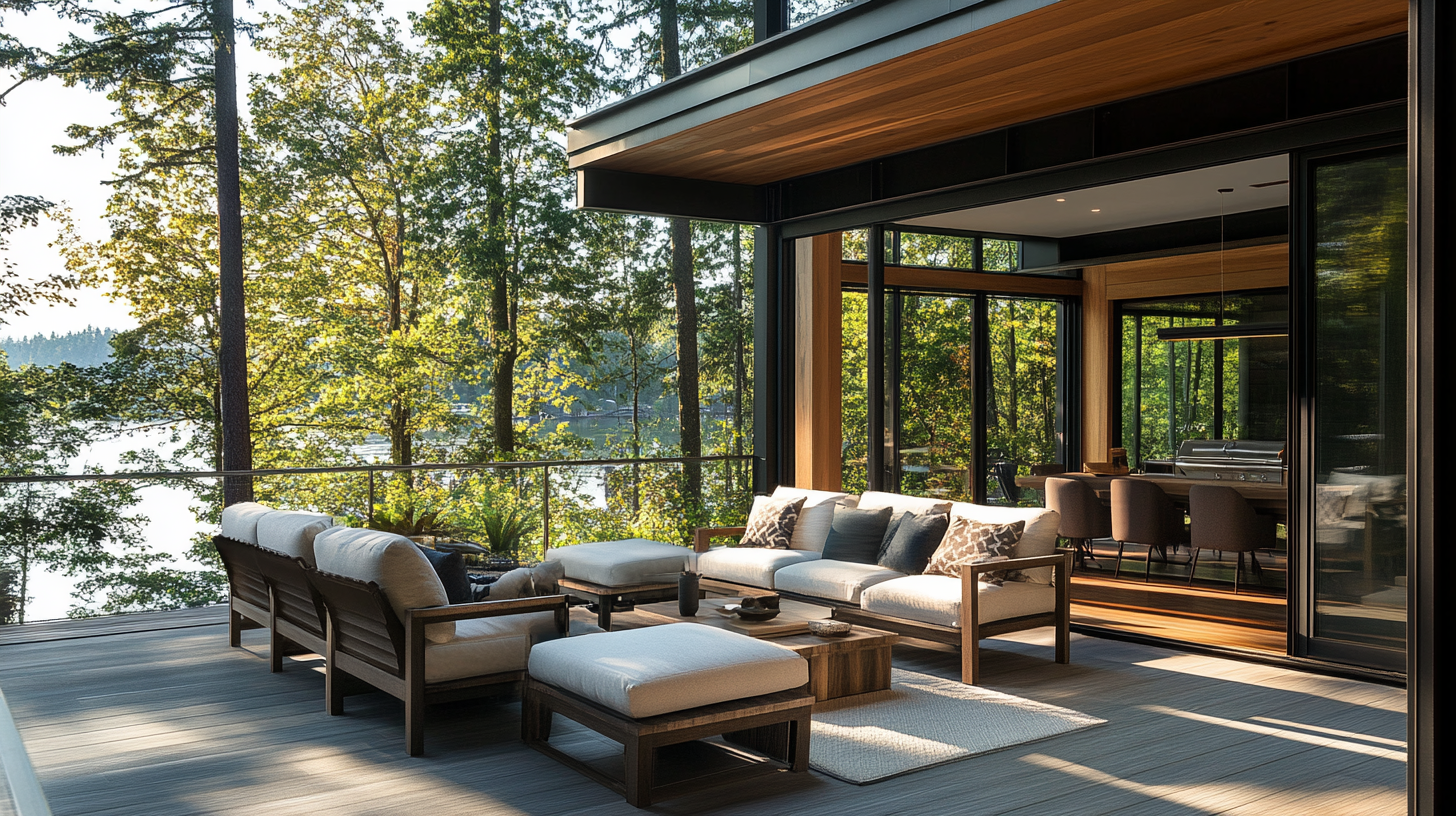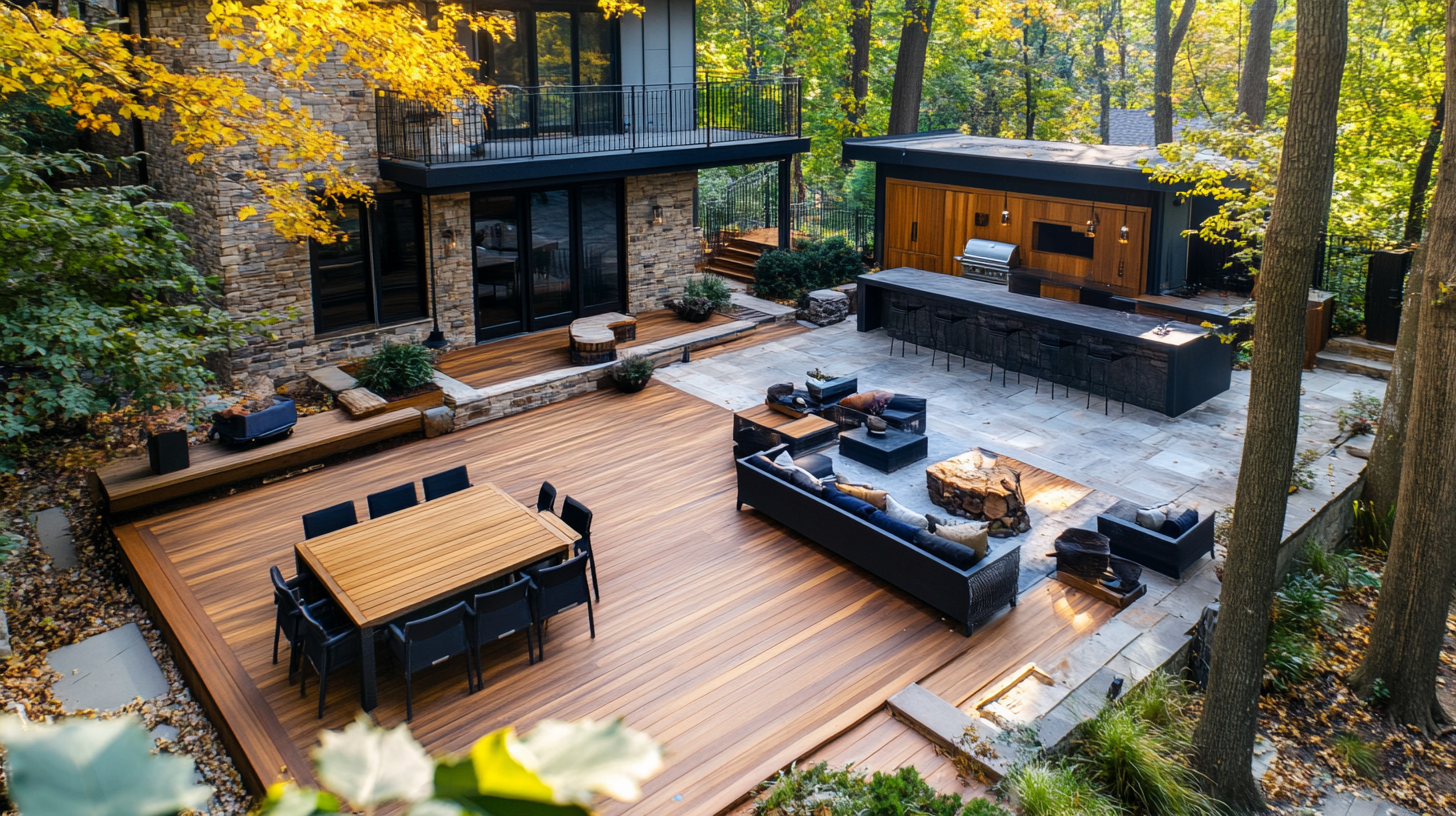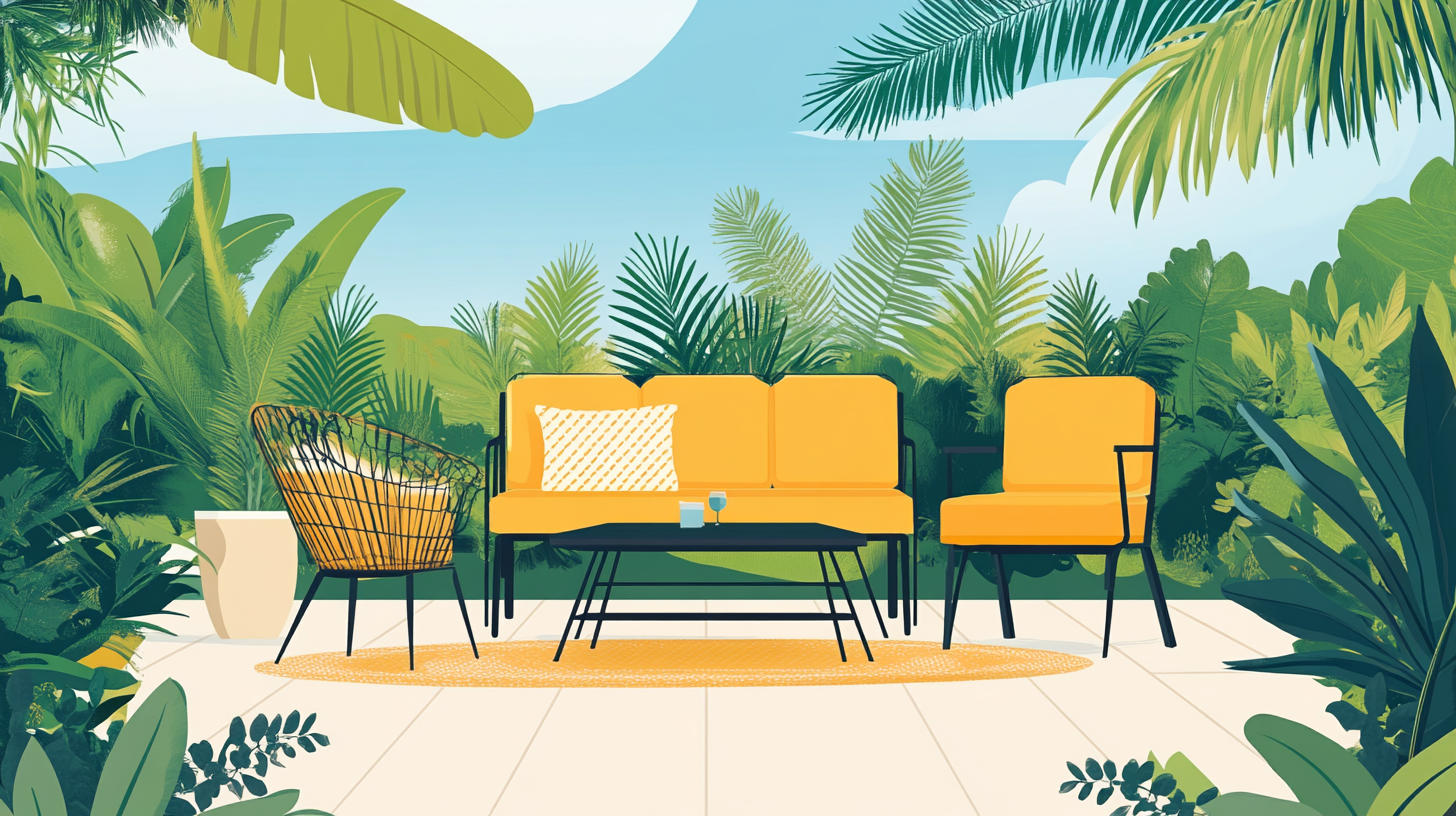Enhancing Outdoor Spaces: How Deck Furniture Trends Are Shaping Global Market Growth in 2023
In 2023, the global market for outdoor living spaces has experienced a significant transformation, largely influenced by the latest trends in deck furniture. As homeowners increasingly seek to extend their living areas into the outdoors, the demand for stylish and functional deck furniture has surged. This trend not only focuses on the aesthetic appeal of outdoor spaces but also encompasses the comfort and versatility that modern consumers desire. From eco-friendly materials to multi-functional designs, the evolution of deck furniture is reshaping the way we interact with our outdoor environments.
As we delve deeper into the dynamics of the deck furniture market this year, we'll explore the factors driving this growth and the innovative trends that are making waves across the globe. The emerging styles reflect a shift towards sustainability and personalization, allowing consumers to curate their outdoor spaces to reflect their individual tastes and lifestyles. This blog will highlight key trends, consumer preferences, and the impact of deck furniture on the broader outdoor living industry, providing valuable insights for homeowners and businesses alike.

Trendy Materials in Deck Furniture: Sustainability and Durability Take Center Stage
In 2023, the trend toward sustainable and durable materials in deck furniture is significantly influencing the outdoor living market. Consumers are increasingly aware of their environmental footprint, leading to a demand for furniture crafted from renewable resources. Materials like reclaimed wood, recycled plastics, and bamboo are becoming favorites among eco-conscious buyers. These options not only reduce waste but also provide unique aesthetics that add charm to outdoor spaces. Durability is another focal point for today’s deck furniture. As homeowners seek to invest in long-lasting outdoor setups, manufacturers are responding by enhancing the resilience of their products. Weather-resistant materials, such as aluminum and high-performance synthetic fabrics, are rising in popularity. These materials withstand the test of time, offering both style and functionality without the constant need for replacement. This shift not only underscores a commitment to sustainability but also reflects a desire for practicality, as consumers seek furniture that can endure harsh outdoor conditions while maintaining their aesthetic appeal. Combining these materials with innovative designs is paving the way for stylish yet sustainable outdoor environments. Brands are now prioritizing eco-friendly manufacturing processes and creating pieces that are both fashionable and functional. This trend towards quality craftsmanship and sustainability is reshaping the outdoor furniture market, encouraging consumers to invest in outdoor accessories that reflect their values while enhancing their living spaces.

Innovative Designs: How Aesthetic Appeal is Driving Consumer Choices in 2023
As consumers increasingly seek to enhance their outdoor spaces, the aesthetic appeal of deck furniture has become a pivotal factor in their purchasing decisions in 2023. Homeowners are no longer merely looking for functional outdoor items; they are prioritizing design elements that seamlessly blend style with comfort. The result is a burgeoning market where innovative designs take center stage, appealing to diverse tastes and preferences.
One of the defining trends of this year is the shift towards sustainable materials and eco-friendly designs. Brands are responding to consumer demand for products that not only look good but also contribute to environmental sustainability. From reclaimed wood to recycled metals, companies are crafting pieces that resonate with environmentally-conscious buyers. This trend not only enhances outdoor aesthetics but also instills a sense of responsibility among consumers, encouraging them to invest in pieces that align with their values.
Additionally, customization has emerged as a leading factor influencing consumer choices. Shoppers are drawn to furniture options that allow them to express their individuality. Modular designs, interchangeable cushions, and a variety of color palettes empower consumers to create outdoor settings that reflect their personal style. This desire for unique, personalized spaces is driving innovation within the industry, leading to an exciting array of products that cater to an increasingly design-savvy marketplace. In this competitive landscape, brands that prioritize aesthetics and adaptability are set to thrive by meeting the demands of discerning outdoor enthusiasts.

The Role of Technology in Modern Outdoor Seating Solutions
The outdoor furniture market is experiencing a transformation in 2023, driven largely by advancements in technology that enhance comfort, durability, and aesthetics. According to a recent report by Grand View Research, the global outdoor furniture market size was valued at approximately $20 billion in 2022, with projections indicating a compound annual growth rate (CAGR) of 5.5% from 2023 to 2030. This growth is significantly influenced by the integration of smart technology into outdoor seating solutions, resulting in products that not only meet consumer expectations but exceed them.
Smart outdoor furniture is becoming increasingly popular, featuring innovations such as weather-resistant materials equipped with sensors to monitor environmental conditions. For example, furniture sets that include UV sensors can alert users when it’s time to seek shade or apply sunscreen. Additionally, IoT-enabled seating options now include built-in chargers and integrated LED lighting, creating functional and inviting spaces for relaxation and entertainment. A report by Mordor Intelligence highlights that technology-infused outdoor furniture is projected to capture a significant share of the market, with an expected value exceeding $4 billion by 2025.
The rise of e-commerce plays a crucial role as well, offering consumers access to a wider range of technologically advanced outdoor furniture. Market players are also leveraging augmented reality tools that allow customers to visualize how different furniture pieces will fit in their outdoor spaces before making a purchase. As reported by Statista, online sales of outdoor furniture surged by over 32% in 2022, showcasing a shift in consumer behavior towards digital shopping experiences that embrace modern technology. This trend underscores a broader movement that melds innovation with outdoor leisure, setting the stage for the future of outdoor design and functionality.

Cultural Influences on Deck Furniture Trends Across Different Regions
As we delve into the cultural influences shaping deck furniture trends across various regions, it's fascinating to observe how local styles and preferences create a vibrant landscape in the global market. According to a recent report by Grand View Research, the global outdoor furniture market is projected to reach $15.3 billion by 2025, highlighting the increasing importance of outdoor spaces in residential and commercial settings. In regions like Europe, the minimalist Scandinavian design emphasizes functionality and sustainability, with materials such as reclaimed wood and metal gaining popularity. This shift reflects a broader cultural appreciation for environmental responsibility.
Meanwhile, in North America, the trend is more inclined towards comfort and luxury, showcasing larger-scale furniture pieces designed for outdoor lounging. A study by IBISWorld found that the outdoor furniture manufacturing industry in the U.S. has grown at an annualized rate of 3.5% over the past five years, driven by a lifestyle that values outdoor living and entertaining. This cultural inclination towards creating an extension of the living space outdoors leads to a demand for plush cushions, fire pits, and social seating arrangements, catering to a growing demographic that prioritizes outdoor gatherings.
In Asia, traditional aesthetics meet modern functionality, resulting in unique designs that often incorporate vibrant colors and intricate patterns. The Asian market, particularly in countries like Japan and China, shows a rising trend in multi-functional furniture that adapts to limited urban spaces while retaining cultural motifs. The report by Market Research Future indicates that Asia-Pacific is expected to witness significant growth, with a CAGR of over 6% in the outdoor furniture sector, reflecting the region’s dynamic approach to balancing tradition and modern lifestyle needs.
The Economic Impact of Deck Furniture Trends on Global Market Dynamics
The outdoor furniture market is experiencing significant growth, driven by evolving consumer preferences and economic factors. In 2023, trends in deck furniture are not only enhancing aesthetic appeal but also impacting global market dynamics substantially. With an increasing focus on outdoor living spaces, homeowners are investing in high-quality deck furniture that offers durability and style. This shift is reflected in the rising demand for innovative materials, such as eco-friendly options and multi-functional designs that maximize space utilization.
Moreover, the economic impact of these trends is palpable across various segments of the furniture market, particularly in Europe and Asia. As the real estate and construction sectors flourish, the demand for sophisticated outdoor furnishings is escalating. Reports indicate that the European furniture market alone is expected to grow by USD 41.1 billion from 2025 to 2029, fueled by these outdoor trends. This growth not only reflects consumer willingness to invest in their living environments but also highlights the broader implications for manufacturing, retail, and sustainability practices in the outdoor furniture industry.
As technology continues to play a vital role, companies are leveraging AI to identify market patterns and consumer behaviors, allowing for targeted product development and personalized shopping experiences. This technological integration is streamlining production processes while pushing the envelope on design, propelling the outdoor furniture sector into a new era of innovation and responsiveness to market demand. Ultimately, these trends are shaping the future of outdoor spaces, creating vibrant environments that resonate with lifestyle aspirations worldwide.
